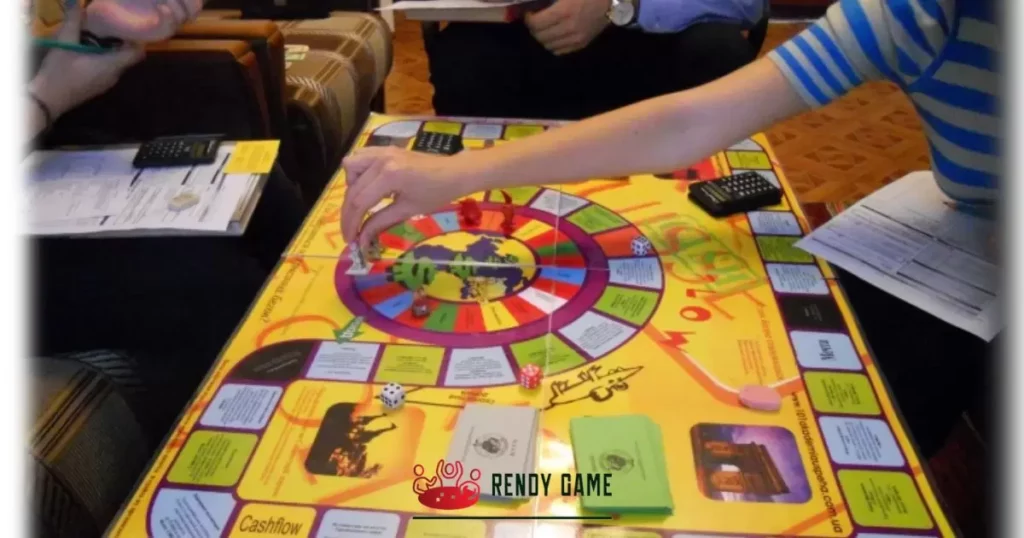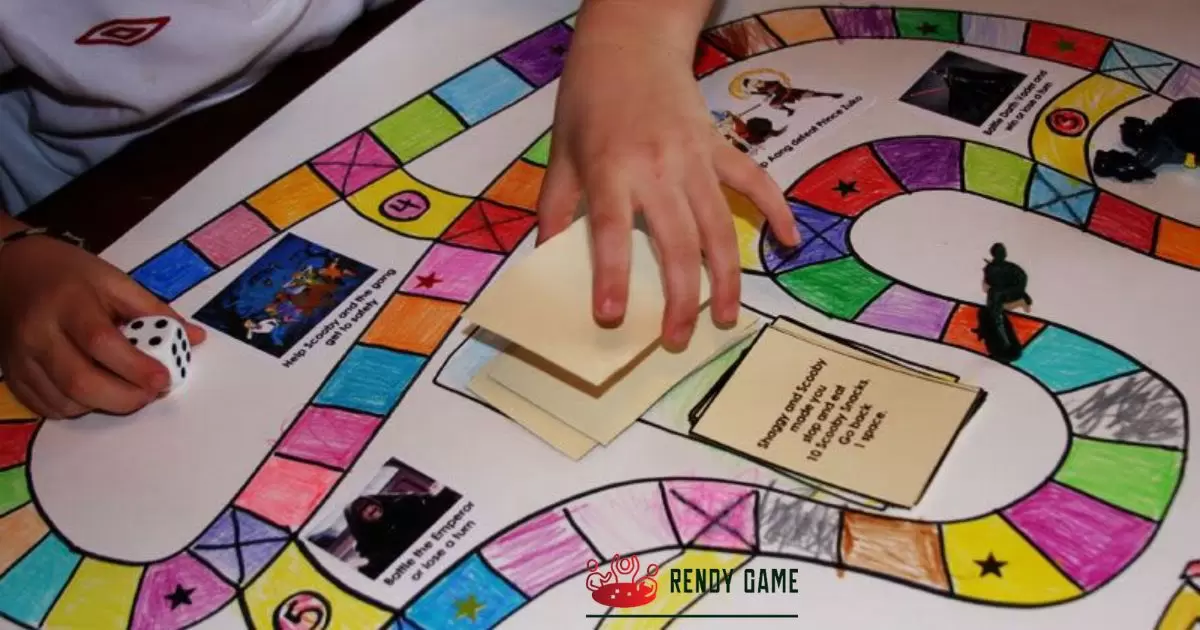Drawing a board game involves creating the visual elements and design of a board game from scratch. This includes drawing the game board, pieces, cards, and any other components needed for gameplay. Whether you’re a budding game designer or just looking to customize an existing game, learning how to draw a board game is a creative and engaging process.
How To Draw A Board Game? Have you ever wanted to bring your game ideas to life? Drawing a board game is the first step in the exciting journey of game design. It’s where your vision takes shape, and you get to decide how the game will look, feel, and play. In this guide, we’ll explore the essential steps and tips to help you bring your board game concept to life through the art of drawing.
Drawing a board game is not just about aesthetics; it’s also about functionality. Each element of the game board, cards, tokens, and pieces must be thoughtfully designed to ensure a smooth and enjoyable gaming experience. The layout, colors, and overall design can significantly impact the game’s appeal and ease of use.
Behind the Scenes of Game Design
Board game design is an intricate and fascinating journey that often goes unseen by the players enjoying the final product. In this section, we’ll take a closer look at the behind-the-scenes processes of some of the world’s best game designers.
The Creative Process of Renowned Game Designers
Game designers, like any other artists, have unique creative processes. Some begin with a thematic concept, while others start with game mechanics. Renowned designers, such as Reiner Knizia and Uwe Rosenberg, often immerse themselves in their chosen themes. Knizia, known for classics like Tigris & Euphrates, embraces abstract themes, while Rosenberg, famous for Agricola and Cottage Garden, often delves into farming and agriculture themes.
Insights into the World of Professional Game Design
Professional game designers work diligently to craft innovative and engaging gaming experiences. They follow a series of structured steps, from initial concept to playtesting and refinement. This section will shed light on the design philosophies and working methods employed by industry professionals.
Secrets to Success from Expert Game Creators
Creating a successful board game requires a blend of creativity, dedication, and market awareness. We’ll explore the secrets to success shared by expert game creators. Key factors include understanding your target audience, staying true to your game’s core concept, and the importance of adapting to player feedback during the development process.
Understanding Board Games

Before diving into the design process, it’s crucial to have a fundamental understanding of board games and their significance in the world of entertainment and recreation.
What Is a Board Game?
At its core, a board game is a structured and rule-based recreational activity played on a game board. These games often involve strategy, competition, and a touch of luck. The diversity of board games is vast, ranging from ancient classics like chess to modern, innovative titles. Understanding the broad spectrum of board games is essential when considering game design.
Why Designing Games Is Important
The importance of designing games extends beyond mere entertainment. Game design impacts cognitive development, social interaction, and storytelling. Well-designed games can become a cultural phenomenon, shaping popular culture and generating significant economic value. This section explores the profound significance of game design in our society.
Starting Your Board Game Design Journey
Embarking on your board game design journey is an exciting and challenging endeavor. This section provides guidance on where to begin and how to navigate the initial stages of game creation.
Where to Start
If you’re new to board game design, you might be wondering where to begin. Start by defining your objectives and motivations. What kind of game do you want to create? Who is your target audience? As a beginner, it’s essential to start with a clear vision and a well-defined concept.
Theme vs Mechanisms vs Experience
Board games are a combination of various elements, including theme, game mechanics, and player experience. Finding the right balance between these aspects is crucial to creating a captivating game. We’ll delve into the intricate interplay between theme, mechanics, and player experience and how they shape your game’s design.
Where to Put Ideas
Generating and organizing ideas is the initial creative challenge in board game design. We’ll discuss brainstorming techniques, concept development, and how to transform your imaginative ideas into practical design elements.
Find the Fun
The heart of any board game is the fun it provides to players. Understanding what makes a game enjoyable and engaging is a fundamental aspect of game design. We’ll explore the psychology of fun and strategies for infusing it into your game’s design.
Play Lots of Games
One of the most valuable resources for a game designer is the experience gained from playing a wide variety of games. Playing games not only offers inspiration but also allows you to study various mechanics, themes, and components. We’ll discuss the importance of playing games as a learning tool for aspiring designers.
Minimum Viable Product
Creating a Minimum Viable Product (MVP) is a critical step in game design. It involves producing a basic version of your game to test its core concepts and mechanics. We’ll guide you through the process of developing an MVP and the benefits it offers in refining your game design.
How to Get Unstuck
Creative blocks and design challenges are common in game design. We’ll provide practical tips and techniques for overcoming these obstacles and keeping your creative process flowing smoothly.
Get Your Ideas Out there
To bring your game design to life, you need to create prototypes and test your ideas. We’ll discuss the importance of prototyping and the process of sharing your game concept with others for valuable feedback.
71 Ways to Become a Better Game Designer
Dedication to improvement is essential for every game designer. In this section, we’ll present a comprehensive list of 71 strategies and resources to help you continuously enhance your skills and knowledge as a game designer.
Elements of Game Design
To create a board game, you’ll need to consider various elements such as prototyping, cards, boards, tokens, and more. Let’s explore these elements in detail.
Prototyping
Creating prototypes is an essential part of game design. A prototype is a preliminary version of your game that helps you test and refine your ideas. It’s a critical step toward turning your concept into a playable game. We’ll walk you through the process of creating effective prototypes.
Cards
Game cards serve as a fundamental component in many board games. They can have various purposes, from conveying information to introducing random elements. This section will discuss the design, types, and strategies for incorporating cards into your game.
Sleeves
Card sleeves are protective covers that enhance the durability and appearance of game cards. We’ll explore the importance of card sleeves in preserving the quality of your game components and how to choose the right ones for your project.
Boards
The game board is the central focus of many board games, including the Don’t Look Back board game. It provides the playing surface and serves as a visual and tactile centerpiece. We’ll discuss the design considerations for creating game boards, including size, shape, and artwork. In the case of the Don’t Look Back board game, the design of the board is crucial to the overall gaming experience.
Stickers
Stickers can be used to enhance your game components, whether for customization or thematic purposes. Learn how to design and apply stickers effectively to your game pieces, cards, and boards.
Tokens and Tiles
Tokens and tiles are versatile components used for various purposes in board games. We’ll explore their design, materials, and the role they play in game mechanics.
Components
Game components encompass a wide range of elements, from meeples to resource tokens. We’ll discuss the considerations for designing and producing components that are both functional and visually appealing.
Dice
Dice are a common element in board games, adding an element of chance and unpredictability. This section will guide you in creating custom dice for unique game mechanics and themes.
Art
Art plays a significant role in board game design, as it helps convey the theme, create immersion, and enhance aesthetics. We’ll discuss the art design process and its importance in game development.
Graphic Design
Effective graphic design is essential for clarity and aesthetics in board games. We’ll cover the basics of graphic design and how it applies to creating visually appealing game components.
Boxes
The game box is the first thing players see when they encounter your game. It’s crucial for marketing and protecting your game. We’ll explore box design considerations, materials, and the role of the box in attracting players.
In the following table, we provide a sample comparison of different card sleeve brands and their features:
| Brand | Material | Size (mm) | Durability | Price |
| Ultra Pro | Polypropylene | 66×91 | Standard | $ |
| Mayday Games | Polypropylene | 63.5×88 | Premium | $ |
| Fantasy Flight | Polypropylene | 57×89 | Premium | $ |
| Arcane Tinmen | Polypropylene | 63×88 | Premium | $ |
| BCW | Polypropylene | 66×91 | Standard | $ |
Wrapping Up Your Board Game Design Journey
As you near the end of your board game design journey, it’s essential to reflect on the insights gained and the progress made. This section provides final thoughts and additional tips for aspiring game designers.
FAQs
What tools do I need to draw a board game?
You’ll need paper, pencils, erasers, markers, rulers, and possibly design software.
Can I design a board game even if I’m not an artist?
Absolutely! Game design is about creativity and ideas, not just artistic skills.
How do I decide on the theme for my board game?
Choose a theme that excites you and aligns with your game’s mechanics and target audience.
Is playtesting necessary when designing a board game?
Yes, playtesting helps refine your game, identify issues, and improve the player experience.
What’s the most crucial aspect of board game design?
Balancing fun and engagement in your game is the key to successful board game design.
Conclusion
The world of board game design offers a captivating and fulfilling creative outlet. It requires a combination of artistic vision, strategic thinking, and practical skills. Remember that every successful game designer started as a beginner, learning and growing along the way. By embracing the principles, tips, and resources discussed in this article, you’re well on your way to becoming a skilled and innovative game designer.
To further your journey in game design, it’s essential to stay connected with the industry and continuously expand your knowledge. This section provides a list of valuable resources, including books, online communities, and events, where you can continue your education and connect with fellow game designers.

